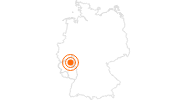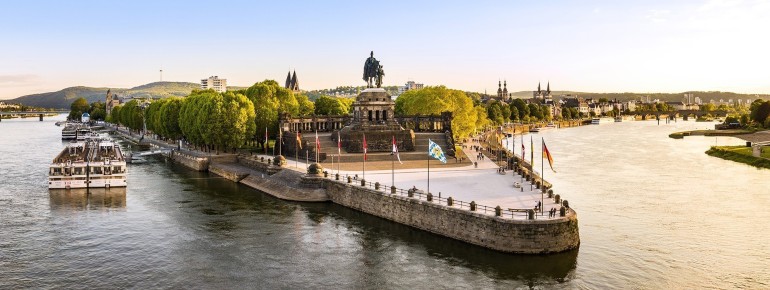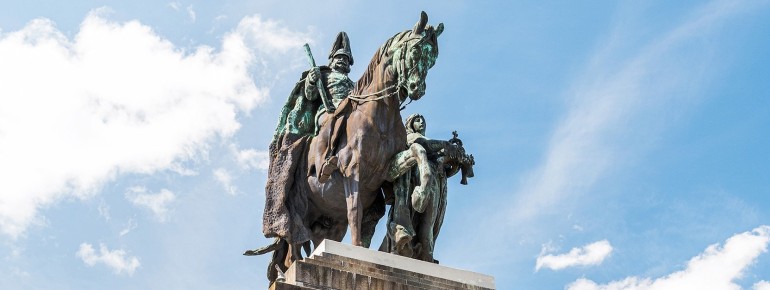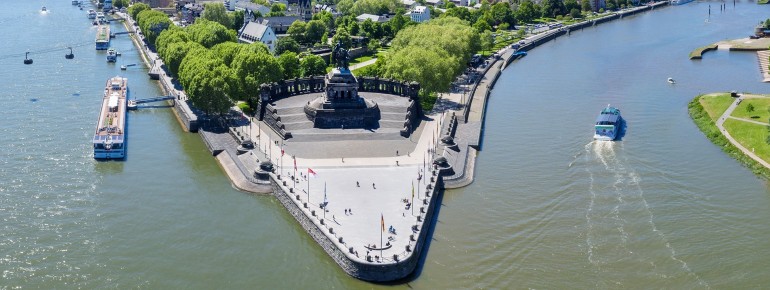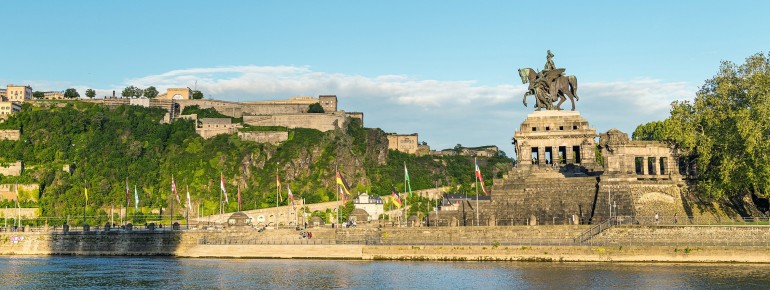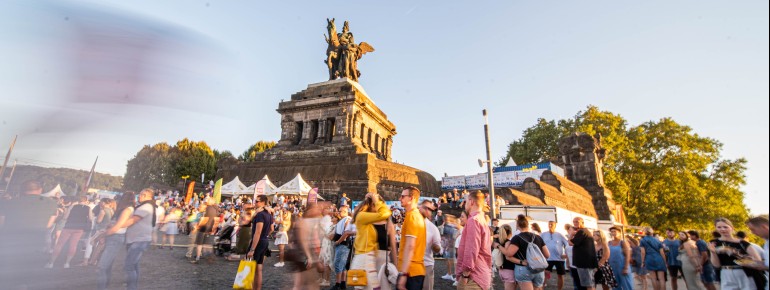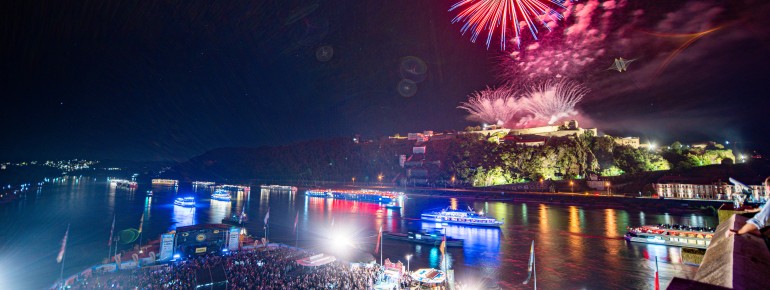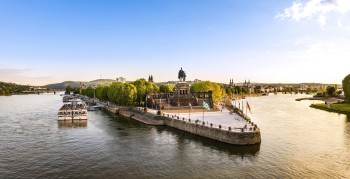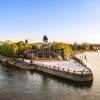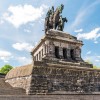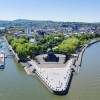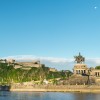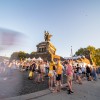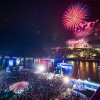Contents
Description
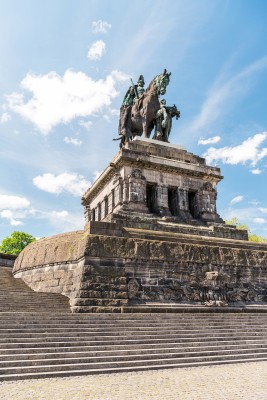
At the confluence of the Rhine and Moselle rivers lies the famous "Deutsches Eck" which translates to "German Corner", in Koblenz, one of the most iconic landmarks in Rhineland-Palatinate. The imposing Kaiser Wilhelm I. Monument on the river peninsula commemorates German unity and impresses with its size: the equestrian statue stands about 14 meters high, while the entire pedestal reaches approximately 38 meter.
Today, the "Deutsches Eck" is a vibrant meeting place for visitors who want to experience history, culture, and nature all in one location. Whether as a starting point for exploring the city, a viewpoint offering a spectacular panorama, or simply a lace to relax, the "Deutsches Eck" is one of the highlights of any visit to Koblenz.
Just a few steps away are more of the city’s major sights: St. Castor Basilica, the oldest church on the Rhine, the Church of Our Lady (Liebfrauenkirche) with its distinctive twin towers, and the Koblenz Cable Car, which carries visitors up to Ehrenbreitstein Fortress while offering breathtaking views over the city and the confluence of the Rhine and Moselle rivers.
Kaiser Wilhelm Monument with a view over the Rhine and Moselle
The base of the Kaiser Wilhelm I. Monument can be visited free of charge and is open all day. From here, visitors enjoy a breathtaking view of the confluence of the Rhine and Moselle rivers, the Old Town of Koblenz, and the impressive Ehrenbreitstein Fortress on the opposite bank. Particularly striking is the contrast of the two rivers, where the greenish waters of the Moselle meet the deep blue of the Rhine.
Leisure and Events at the Deutsches Eck
A walk along the Rhine promenade or a ride on the cable car to Ehrenbreitstein Fortress offers perfect opportunities to enjoy the panoramic view from above. During the summer months, the German Corner regularly hosts events and open-air concerts, the most famous being the spectacular "Rhine in Flames", which attracts thousands of visitors every year. The site is also a popular starting point for cycling tours along the Rhine and for boat trips on both rivers.
Historical Information
The "Deutsches Eck" owes its name to the Teutonic Order, which established a settlement at this location in the 13th century. The landmark that characterizes the site today, however, is the monumental Kaiser Wilhelm I. Monument, erected in 1897 as a symbol of Germany's unification following the founding of the Empire in 1871. After being destroyed during World War II., the monument was faithfully reconstructed in 1993 and is now regarded as a memorial to peace and unity. Today, the "Deutsches Eck" is not only a place of remembrance, but also a symbol of a united Europe, made visible by the many national flags of the EU member states that wave proudly here.
How to get there
The "Deutsches Eck" is centrally located and easily accessible by car, public transport, or on foot.
By Car: The city of Koblenz can be conveniently reached via the A48 and A61 motorways. In the city center, the German Corner is well signposted.
Parking: Public parking facilities are available nearby, such as the Rhein-Mosel-Halle parking garage of the Kastorhof car park, both just a few minutes' walk from the German Corner.
By train: From Koblenz Central Station, it takes about 20–25 minutes on foot to reach the German Corner, or you can take a bus (lines 1, 3, 5, or 20) to the stop "Deutsches Eck".
By bicycle: Koblenz lies directly on the Rhine and Moselle cycle paths, making it a perfect stop for cyclists exploring the region.
